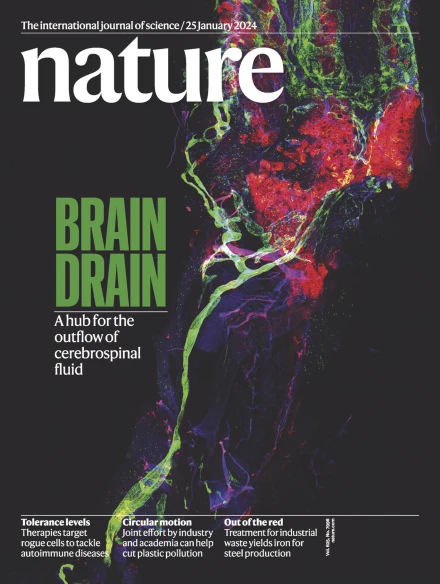光催化激活小分子和多氟烷基物质中的 C-F 键
IF 50.5
1区 综合性期刊
Q1 MULTIDISCIPLINARY SCIENCES
引用次数: 0
摘要
有机卤化物是化学合成中非常有用的化合物,卤化物是一种多功能官能团,可与过渡金属或光催化发生消除、取代和交叉偶联反应1-3。然而,碳-氟键的活化是商业上最常见的有机卤化物,在全氟辛烷磺酸(PFAS)或 "永远的化学品 "中也有发现,但却非常罕见。目前基于光氧化化学的小分子碳-氟(C-F)键活化方法受到了所需底物和过渡金属催化剂的限制4。直接活化有机氟的通用方法在有机化学和环境化学中具有重要价值。在此,我们报告了一种有机光氧化催化剂体系,它能有效还原 C-F 键生成碳中心自由基,然后截取碳中心自由基进行氢氟化(将 F 换成 H)和交叉偶联反应。在温和的反应条件下,该系统可以普遍使用有机氟作为合成子。我们将这一方法扩展到多氟烷基物质(PFAS)和含氟聚合物的脱氟中,这是分解持久性和破坏环境的永久性化学物质的一个关键挑战。本文章由计算机程序翻译,如有差异,请以英文原文为准。

Photocatalytic C–F bond activation in small molecules and polyfluoroalkyl substances
Organic halides are highly useful compounds in chemical synthesis, in which the halide serves as a versatile functional group for elimination, substitution and cross-coupling reactions with transition metals or photocatalysis1–3. However, the activation of carbon–fluorine (C–F) bonds—the most commercially abundant organohalide and found in polyfluoroalkyl substances (PFAS), or ‘forever chemicals’—is much rarer. Current approaches based on photoredox chemistry for the activation of small-molecule C–F bonds are limited by the substrates and transition metal catalysts needed4. A general method for the direct activation of organofluorines would have considerable value in organic and environmental chemistry. Here we report an organic photoredox catalyst system that can efficiently reduce C–F bonds to generate carbon-centred radicals, which can then be intercepted for hydrodefluorination (swapping F for H) and cross-coupling reactions. This system enables the general use of organofluorines as synthons under mild reaction conditions. We extend this method to the defluorination of PFAS and fluorinated polymers, a critical challenge in the breakdown of persistent and environmentally damaging forever chemicals. An organic photoredox catalyst system efficiently reduces C–F bonds, generating carbon-centred radicals for hydrodefluorination and cross-coupling reactions, enabling the general use of organofluorines as synthons and breaking down environmentally damaging forever chemicals.
求助全文
通过发布文献求助,成功后即可免费获取论文全文。
去求助
来源期刊

Nature
综合性期刊-综合性期刊
CiteScore
90.00
自引率
1.20%
发文量
3652
审稿时长
3 months
期刊介绍:
Nature is a prestigious international journal that publishes peer-reviewed research in various scientific and technological fields. The selection of articles is based on criteria such as originality, importance, interdisciplinary relevance, timeliness, accessibility, elegance, and surprising conclusions. In addition to showcasing significant scientific advances, Nature delivers rapid, authoritative, insightful news, and interpretation of current and upcoming trends impacting science, scientists, and the broader public. The journal serves a dual purpose: firstly, to promptly share noteworthy scientific advances and foster discussions among scientists, and secondly, to ensure the swift dissemination of scientific results globally, emphasizing their significance for knowledge, culture, and daily life.
 求助内容:
求助内容: 应助结果提醒方式:
应助结果提醒方式:


